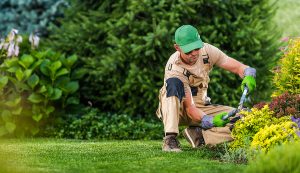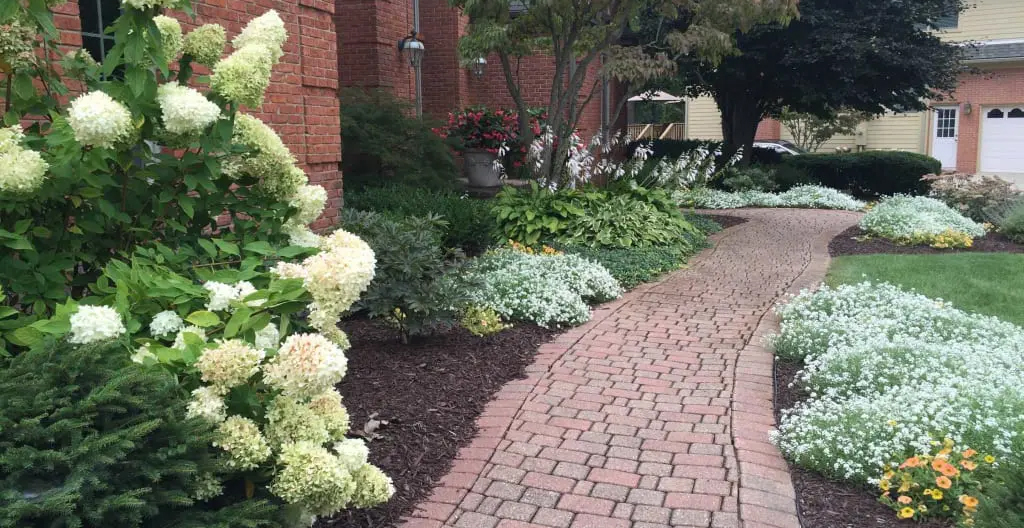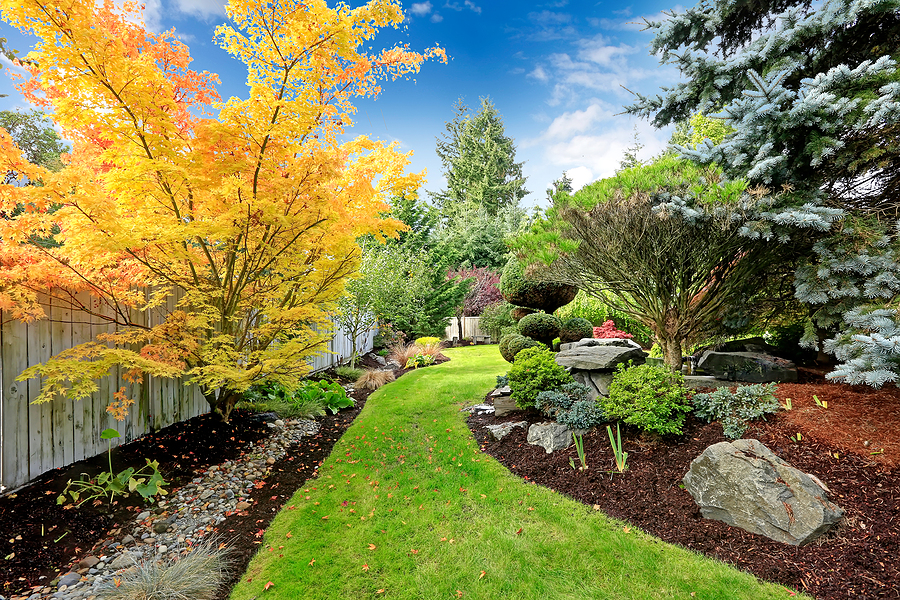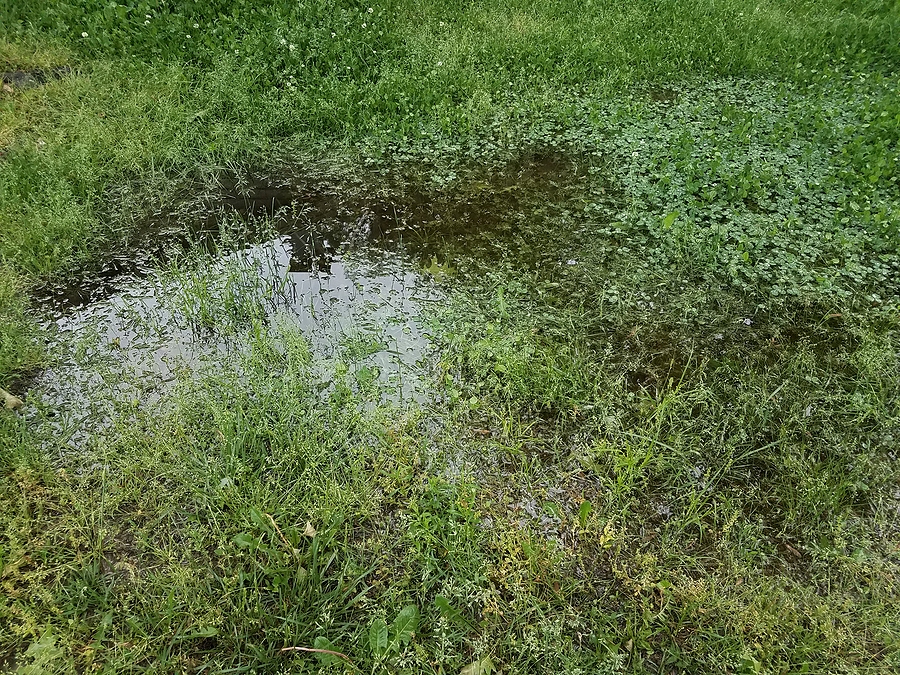A Guide to Pruning: Evergreens and Oaks
April 23, 2024
Having trees on your property can greatly enhance your curb appeal. However, to keep your trees healthy, maintenance pruning is necessary. Different trees have different needs, and it is essential to understand the differences in pruning between oaks and evergreens. As the timing, methods, and procedures for proper pruning can make a significant difference in the health and appearance of your trees, using a professional is always a smart idea. A professional working with a residential landscaping company will know exactly how to keep your trees healthy and beautiful.

Understanding Evergreen Trees
Evergreens differ from deciduous trees in several vital ways. Deciduous trees, the trees that lose and regrow their leaves each year, have different growth patterns that require a different approach to pruning. Evergreens typically do not need to be pruned as often because their growth patterns are consistent, and the trees will keep their shape naturally. However, there are times when evergreens will need to be pruned to remove dead or diseased branches and keep them healthy.
Pruning Essentials for Evergreens
The timing of pruning for evergreens is not as essential, as most evergreen pruning is done for corrective reasons. If an evergreen tree is damaged or disease is noted, prune immediately, regardless of the season. However, for evergreens that are simply overgrown, pruning should be done in the early spring, where new growth can cover pruning wounds. If possible, pruning should be avoided in late summer and early fall, as new growth spurred by pruning will not have enough time to harden off before winter.
Evergreen trees should always be allowed to grow naturally, with only maintenance pruning of random branches to keep trees at an appropriate size. Pruning into the inactive center (a space on the limb with no needles or leaves attached) should always be avoided because new branches will not form to conceal the stubs. Heavy pruning evergreen trees may require flexible wood or wire splints to help with new growth. Pruning will need to be done at a 45 to 60 degree angle, and all pruning tools should be sanitized in between cuts to prevent the spread of any disease or damage to the tools.
Understanding Oak Trees
Oak trees are a beautiful addition to any property, as they are a symbol of strength and longevity. To keep these trees flourishing and healthy, they must be pruned properly. However, oak tree pruning needs to be done carefully. Over-pruning or pruning with poor technique can harm the tree, making it more susceptible to pests or disease. Pruning can alleviate stress on the tree by eliminating weak branches, allowing the oak to allocate resources more efficiently. When preparing to prune an oak tree, working with professionals who understand oak trees and their needs is crucial.
Timing Your Pruning is Essential for Oak Trees
The most essential aspect of pruning oak trees is determining the right time to prune. Timing is crucial, and the ideal time to prune oak trees is during the winter dormant season when the trees are not in active growth. This is usually in late winter or early spring. It is essential to avoid pruning oak trees whenever they are in an active growth state, usually in the spring and early summer. Pruning while the tree is in this phase disrupts the growth pattern and leaves the tree vulnerable to pests and diseases. It is always best to let the trees allocate their energy towards establishing new growth. In addition, no pruning should occur in the late summer or early fall, as this is when oak trees are most susceptible to oak wilt fungus. If oak trees are pruned now, they will release spores that attract insects carrying the fungus. Talk to an expert about your planned time for pruning, and they will be able to let you know if you are safe.
Best Pruning Practices for Oak Trees
In oak tree pruning, the focus should be on removing dead or diseased branches to prevent the spread of disease or decay while encouraging new growth. Thinning the crown of the oak tree will allow for improved air circulation and sunlight penetration. Finally, eliminating low-hanging branches can create clearance underneath the tree, enhancing the tree’s look and making it safer for those around the tree. When it comes to specific pruning techniques, a certified specialist is the most skilled in removing the right branches without harming the rest of the tree.
Advantages of Hiring a Professional for Pruning
When you hire a professional for pruning, you will get the expertise and knowledge to keep your tree safe and healthy. A professional has the proper understanding to make informed decisions about how and where to prune. Professionals are also skilled in proper pruning techniques and can ensure that the pruning is done correctly. They have the right training to understand the biology and physiology of each tree species, which allows them to make informed decisions to prevent damage and promote healthy growth. They know how to identify problems such as pests or diseases and react accordingly to preserve tree health. Finally, hiring a professional ensures that your pruning will be done correctly and safely. Pruning can be dangerous, but experts are trained to protect themselves and your family.
Why Hire Twin Oaks Landscape?
Enhance your property’s beauty and health with expert tree care from Twin Oaks Landscape! Whether you have majestic oaks or lush evergreens, our certified professionals understand the unique pruning needs of each tree species.
Maintaining the health and appearance of your trees requires specialized knowledge and precise techniques. Don’t risk harming your trees with improper pruning—trust our experienced team to keep your trees thriving.
We handle everything from timing considerations to pruning techniques with care and expertise. Let us ensure your trees receive the attention they deserve, keeping them strong, vibrant, and beautiful for years.
Contact Twin Oaks Landscape today to schedule your professional tree pruning service and enjoy the benefits of healthy, well-maintained trees on your property. Your trees will thank you, and so will your curb appeal!




